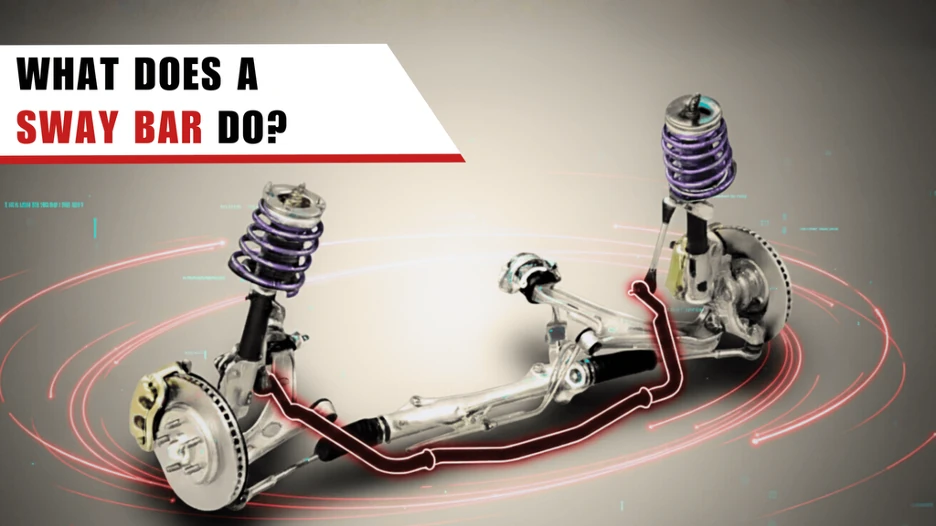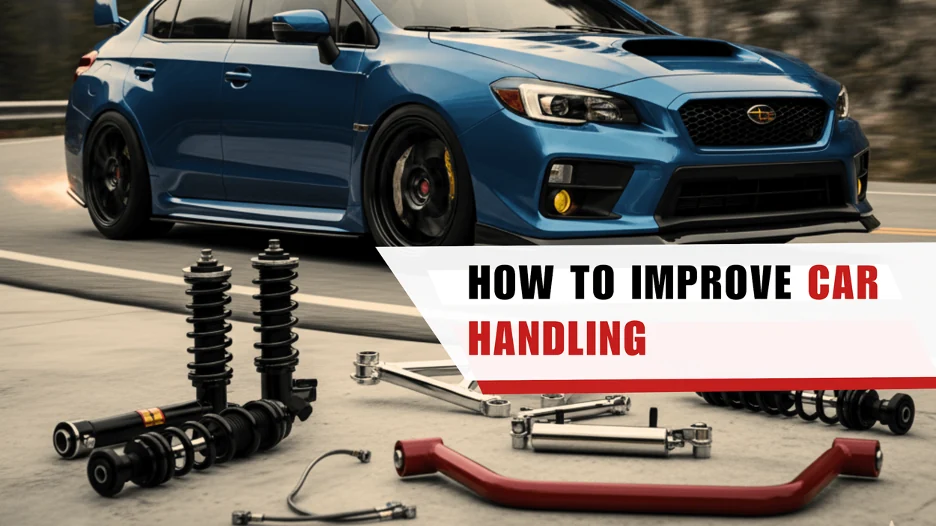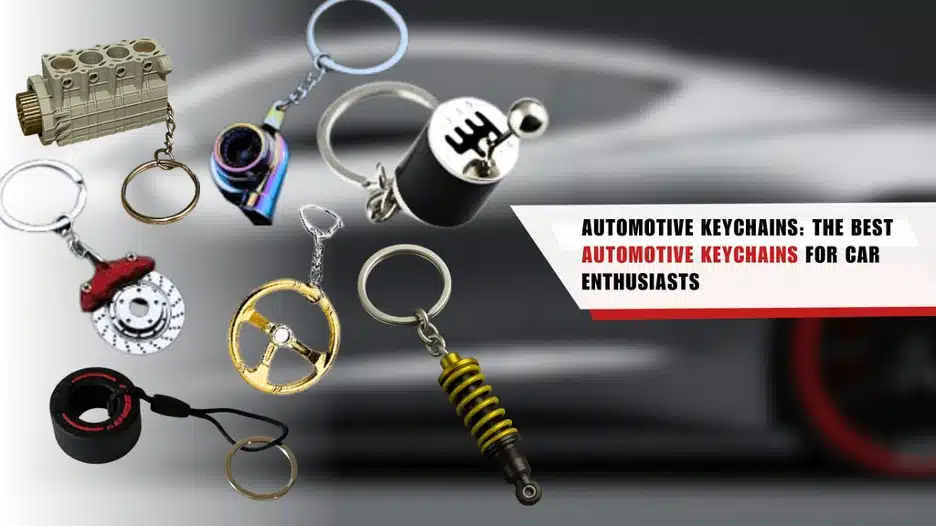
Ever take a fast corner and feel your car lean like it’s about to tip over? It is called body roll, and that’s exactly what a sway bar is built to control.
The sway bar (also called an anti-roll bar or stabilizer bar) is one of those parts most drivers don’t think about until something feels off in how their car handles. You won’t see it unless you get under the car, but you’ll definitely feel it when it’s doing its job which is: keeping your ride stable, especially around turns.
Here’s the thing, Sway bars don’t just improve handling, they make your entire driving experience safer and smoother. They are the hidden heroes of suspension systems because once you drive a car with a good setup, you instantly feel the difference.
If you’re really serious about tightening up your car’s response, you should definitely check out our detailed guide on how to improve your car handling for better control. It breaks down other suspension upgrades that pair perfectly with a sway bar upgrade.
But in this article, we’ll break down what sway bars actually do, the signs they’re failing, whether you can repair or upgrade them, and why investing in one can totally change how your car feels on the road.
What Is a Sway Bar and Why It Matters for Handling
A sway bar, also known as an anti-roll bar, is one of those parts that doesn’t get enough credit for what it does. It’s basically a metal bar that connects the left and right sides of your suspension together, helping your car stay flat and stable when you’re turning.
When you take a corner, the weight of the car naturally shifts to one side. Without a sway bar, that body roll would be a lot more noticeable. The sway bar’s job is to resist that motion, keeping your tyres planted and giving you better control of the vehicle.
That’s why cars with good sway bars always feel more confident on the road. You’ll notice better handling, more balanced turns, and that sense of stability that makes the whole driving experience smoother, especially at higher speeds or during quick lane changes.
Whether it’s a daily driver, a sports coupe, or even an SUV, a properly functioning sway bar plays a huge role in how connected your car feels to the road. It’s one of those small components that quietly makes a big difference.
What Are the Benefits of a Sway Bar?
Now that we know what a sway bar does, let’s talk about why it actually matters for your driving experience. The benefits go beyond just better handling, they touch everything from safety to comfort.
First off, a sway bar keeps your car balanced during sharp turns or uneven road surfaces. You know that leaning feeling when you Take a corner a bit faster than usual?
The sway bar fights that. It keeps the car flatter, which means your tyre maintains better contact with the road and that equals more grip and control.
The benefits are:
● Improved stability
● Better traction or less body roll
● Increased comfort
● Enhanced safety
If you’re into performance driving or just love a car that feels balanced on the road, upgrading to a thicker or adjustable sway bar can make a noticeable difference. But even for daily driving, a healthy sway bar setup improves confidence and control without making the ride harsh.
What Are the Symptoms of a Bad Sway Bar?
When a sway bar starts to fail, it doesn’t always call for attention but your car will definitely start to feel different. Most of the time, you will notice subtle handling issues that gradually get worse if ignored.
The first and most common sign is increased body roll. If your car suddenly feels looser or leans more when turning, the sway bar or its bushings and links might be worn out.
You might also hear clunking or knocking sounds from underneath the car, especially when going over bumps or turning. That’s usually the sway bar link moving around because the rubber bushings have lost their grip.
Here are a few symptoms of a bad sway bar:
● The car sways or leans excessively during turns
● You hear rattling or clunking noises from the suspension area
● Handling starts feeling floaty or less responsive
● Tire wears and becomes uneven due to inconsistent weight distribution
Your broken sway bar won’t make your car undrivable, but it will make it less safe. The car becomes unpredictable in corners, which isn’t something you want, especially in wet or high-speed conditions.
If you notice these symptoms, have the sway bar assembly inspected as soon as possible. Sometimes it’s just the links or bushings that need replacing, not the entire bar itself.
Can a Sway Bar Improve Handling?
A sway bar can make a difference in how your car feels, especially in corners. While shocks and springs handle bumps, the sway bar’s job is to control body roll.
When both sides of the suspension are connected through a solid or tubular bar, the sway bar resists excessive movement on one side. This means your car stays flatter, your tires maintain better contact with the road, and you get sharper steering response.
However, it’s not about slapping on the stiffest sway bar you can find. If you go for the most stiff and huge, your ride may become harsh or even lose traction over uneven roads. The key is balance, pairing the right sway bar size with your suspension setup.
That’s why many enthusiasts upgrade to aftermarket sway bars when tuning their cars. Brands like Eibach and Whiteline, offer kits that give you adjustable stiffness options, so you can fine-tune how your car handles without sacrificing comfort.
Can a Sway Bar Be Repaired or Does It Need Replacement?
Sway bars don’t usually go bad on their own. They’re solid steel, and unless your car has been through a serious crash or years of rust, the bar itself will outlast the vehicle. What wears out are the links and bushings that connect the bar to your suspension.
Those little guys take all the flex and movement, and over time, they start squeaking, knocking, or just feeling sloppy. You’ll notice it when the car starts to roll more in corners or makes that dull clunk sound over bumps.
Now, if that’s your case, you probably don’t need a full sway bar replacement. Most of the time, you can just swap out the links or bushings and, your car’s handling feels brand new again. They’re inexpensive, easy to replace, and you don’t need a race shop to do it.
But if your sway bar is bent, cracked, or rusted, don’t mess with it, replace it. Welding or trying to straighten it out is not safe and never worth the risk.
Conclusion
The sway bar is one of those parts you don’t really notice, until it stops doing its job. It’s the silent thing that keeps your car flat through corners, helps your tires stay planted, and gives you that tight driving feel we all love.
If you’ve been wondering why your car leans more than it used to or makes a weird clunk when you hit bumps, don’t panic. It’s usually just worn-out links or bushings. They are small parts that make a big difference when replaced.
And for those chasing better performance or better handling, upgrading your sway bar setup can completely change how your car behaves on the road.



